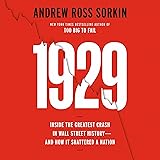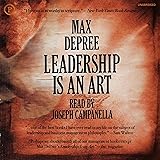As highlighted in the accompanying video, the approach to gold investment often involves misconceptions that can lead to significant financial losses. While the allure of shiny ornaments is strong, many investors overlook crucial charges that erode potential returns. For instance, making charges can range from 3% to a staggering 25%, and wastage charges typically fall between 10% to 18%. On top of this, a 3% GST is levied on the total value. Imagine purchasing a gold chain worth ₹1,00,000, only to find that additional charges of ₹30,000 push your total cost to ₹1,30,000. If you decide to sell that chain later, you might only recover the pure gold value of ₹1,00,000, incurring an immediate loss of ₹30,000.
This illustrates a critical point for anyone considering gold as a serious investment vehicle. Jewelry, with its embedded costs, is often a poor choice for wealth accumulation. Smart investors prioritize pure gold forms and diverse digital options to maximize their returns and avoid these hidden pitfalls. Understanding these nuances is essential for effective gold investment.
Understanding the Hidden Costs in Gold Jewelry
When you purchase gold jewelry, you are not just paying for the gold itself. Several additional charges contribute to the final price, significantly reducing its investment potential. These costs are often non-recoverable when you sell, making jewelry a depreciating asset rather than a growth-oriented investment.
Making charges, also known as craftsmanship charges, compensate the jeweler for designing and creating the piece. These vary wildly based on the intricacy of the design and the jeweler’s brand value. A simple chain might incur 3-5% in making charges, while a heavily studded or intricate necklace could see charges soaring to 20-25%. This substantial upfront cost instantly reduces the recoverable value of your gold.
Wastage, or “cutting loss,” accounts for the gold lost during the manufacturing process due to melting, filing, and polishing. Jewelers typically factor this into the price, with charges ranging from 10% to 18%. This is pure material loss for the buyer. The Goods and Services Tax (GST) adds another 3% on the total value, encompassing both the gold price and the making charges. These cumulative costs drastically impact the effective price you pay for the pure gold content.
Why Jewelry isn’t an Ideal Gold Investment
Beyond the direct charges, gold jewelry presents other challenges for investors. Purity can be a concern; while hallmarking provides assurance, the actual gold content in alloys can sometimes be ambiguous. Liquidity is also an issue, as selling jewelry often means negotiating with jewelers who may apply their own deductions. Storage can be inconvenient and risky, requiring insurance or bank lockers. For these reasons, financial experts generally advise against purchasing jewelry specifically for investment purposes.
Smarter Physical Gold Investment Options
If your preference leans towards owning tangible gold, there are significantly better alternatives than jewelry. Gold biscuits and gold coins are designed with investment in mind, offering higher purity and fewer hidden costs.
Gold biscuits, also known as gold bars, are typically available in various denominations like 5g, 10g, 20g, 50g, 100g, and even 1kg. They are prized for their high purity, often 999 (99.9%) or 999.9 (99.99%) fine gold. When you buy gold biscuits, the making charges are minimal, usually just enough to cover the casting process, which is far lower than for jewelry. Wastage charges are virtually non-existent, as they are not manufactured into intricate designs. The 3% GST still applies, but on a much ‘cleaner’ base value.
Similarly, gold coins from reputable sources like banks, certified jewelers, or government mints (such as MMTC-PAMP in India) offer high purity. These coins also come with minimal making charges and no wastage. They are easier to store and typically command a better resale value due to their standardized weight and purity. Investing in these forms ensures that a higher percentage of your money goes directly towards the gold itself, making them a more prudent choice for gold investment.
Exploring Digital and Paper Gold Avenues
For those seeking convenience, security, and a potentially higher return on their gold investment, digital and paper gold options offer compelling advantages. These avenues remove the need for physical storage and often provide better liquidity and taxation benefits.
Digital Gold Platforms
Digital gold allows you to buy and sell gold online in fractions of grams, typically stored in insured vaults by the provider. You receive a digital certificate of ownership, and if you wish, you can even redeem it for physical gold delivery (though often subject to minimum quantities and delivery charges). Many apps and platforms offer digital gold investment, making it accessible to a wide range of investors.
The primary advantage here is the removal of making and wastage charges entirely. You pay for the pure gold content at prevailing market rates, plus the 3% GST. Storage and insurance costs are usually absorbed by the platform or included in a small spread. While convenient, it’s crucial to choose platforms with transparent pricing and robust security to ensure your gold is safely managed. The regulatory landscape for digital gold can also vary, so investors should be aware of the specific terms and conditions.
Sovereign Gold Bonds (SGBs)
SGBs are government securities denominated in grams of gold, issued by the Reserve Bank of India on behalf of the Government of India. They offer a unique blend of gold price appreciation and a fixed annual interest rate (currently 2.50% per annum, paid semi-annually). These bonds have an 8-year maturity period with an exit option after the fifth year.
The key benefit of SGBs for gold investment is their safety, backed by the government. There are no making charges, wastage, or storage costs. Furthermore, capital gains arising from redemption upon maturity are exempt from tax, making them highly attractive for long-term investors. You buy them at the issue price and receive the market value of gold at maturity, plus the interest. This is arguably one of the most tax-efficient ways to invest in gold, offering both yield and capital appreciation potential.
Gold Exchange Traded Funds (ETFs)
Gold ETFs are mutual funds that invest primarily in gold bullion. They trade on stock exchanges like shares, allowing investors to buy and sell gold units throughout the trading day at market-driven prices. Each unit of a Gold ETF typically represents 1 gram of gold (or a fraction thereof) of high purity.
To invest in Gold ETFs, you need a demat account and a trading account. They offer excellent liquidity, as you can sell them anytime during market hours. The price tracking of physical gold is generally very accurate. While there are no making or wastage charges, investors do incur expense ratios (annual charges by the fund for managing assets), brokerage fees, and capital gains tax upon selling. Gold ETFs are ideal for investors who prefer market-linked prices, transparency, and ease of trading without the hassle of physical gold storage.
Gold Mutual Funds
Gold Mutual Funds are another indirect way to invest in gold. These funds primarily invest in Gold ETFs or companies involved in gold mining and refining. Unlike Gold ETFs, you don’t need a demat account to invest in gold mutual funds; you can invest directly through fund houses or distributors.
These funds offer the convenience of professional management and portfolio diversification, as some may also invest in international gold-related assets. However, they tend to have higher expense ratios compared to Gold ETFs because of the additional layer of management. They are suitable for investors who prefer a more managed approach to their gold exposure and may not have a demat account. Just like ETFs, capital gains tax applies. This option allows for regular investment through Systematic Investment Plans (SIPs), making gold investment accessible for smaller, periodic contributions.











